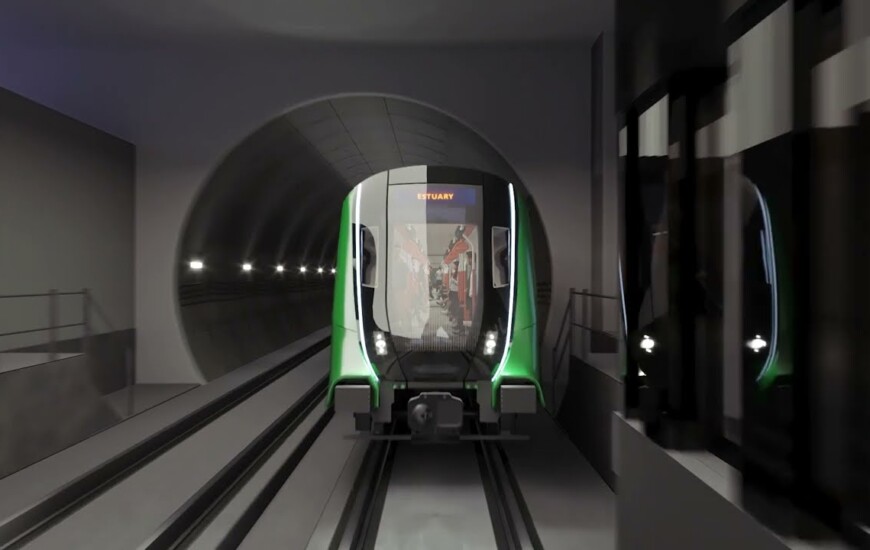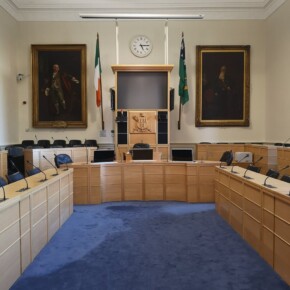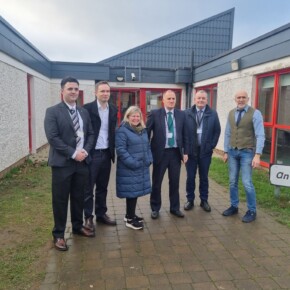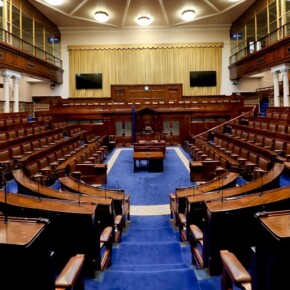Metrolink should be extended to South-West Dublin, Ahern says
Mike Finnerty 25 Jun 2025
When the Metrolink was first floated in government offices in November 2001, Ireland had just qualified for the World Cup after a play-off victory against Iran.
Nearly 25 years on, both the Metrolink and Iran have found themselves in the headlines for all the wrong reasons.
The Metrolink, for all its promise and pomp, hasn’t had as much as a shovel put in the ground and Iran is now at the centre of a regional war which could go either way.
Last year saw local and general elections take place, and Dublin being one of the few capital cities in the world without a direct rail link to the airport was something brought up time and time again on the doorsteps.
Local Labour TD Ciáran Ahern has now called on the government to put its money where its mouth is and to deliver a metro link to serve south-west Dublin.
While the Luas Red Line serves Ahern’s constituency of Dublin South-West, the Labour transport spokesperson that his part of Dublin has been historically underserved by public transport.
Ahern noted that the Programme for Government, published in January, called for a feasibility study about a metro line for south-west Dublin, but questioned how and when the government looks to conduct the study.
Speaking in the Dáil this week, Ahern said, “the two Luas lines run along the edges of the area and between those two lines there’s a gaping hole with a population of more than 350,000 people with zero rail infrastructure. We need movement on this sooner rather than later.”
Ahern said that a feasibility study, which was carried out by the National Transport Authority in 2021, was “deeply flawed,” and said that an independent study commissioned by the Metro South-West Group showed much more promising results.
In the independent report commissioned by the Metro South-West Group, it was found that extending the Metrolink out to south-west Dublin would deliver a much more promising cost-benefit ratio: a ratio between 1.6 and 2.2 compared to the NTA’s findings.
The NTA study was carried out in 2021; Ahern, and the Metro South-West Group argue that if the same study was carried out today, by 2025 standards, it would deliver a much more beneficial cost-benefit ratio and that needs to be taken into account when the government makes a decision on the project.
Ahern noted “getting the sod turned on Metrolink is obviously and understandably the government’s priority. It’s a project I wholeheartedly welcome and support – it will be transformative for Dublin.”
“But extending the Metrolink to Dublin South-West has to be part of the long-term thinking. To be clear, no one is asking that this be prioritised over Metrolink, but simply that a new feasibility study is conducted with independent oversight.”
Ahern said, “we know the massive positive impact that rail infrastructure has for communities and in encouraging people to use public transport – we’ve seen it with the Luas and the DART – not to mention the absolute urgency with which we need to reduce our transport emissions. Far too many people in Dublin South-West are excluded from those benefits.”
“For too long, there has been a lack of joined-up thinking in Dublin’s public transport system. Assuming this government does get the sod turned on Metrolink – and I sincerely hope they do – then it must be done in conjunction with a new independent feasibility study on a metro for Dublin South-West.”
The Labour TD said, “Minister O’Brien cannot put this on the long finger.”
As reported in an April 2024 edition of Southside People, the Metro South West Group told the hearings that the Metrolink should be extended out as far as Knocklyon.
The Metro South West Group told the hearings that the area should also benefit from Metrolink services and that merely expanding Luas services isn’t enough.
2022 Census statistics found that 355,000 people in the southwest of Dublin, but will not see the direct benefit of the Metrolink based on its current design.
As it stands, the Metrolink would have its Southside terminus at Charlemont.
One of the big objectors to the Charlemont terminus at the time was local Fianna Fáil TD and now Minister for Justice Jim O’Callaghan.
Speaking to the Business Post in February 2024, O’Callaghan said, “if you look at any railway link around Britain or in America, generally they link and terminate in the city centre; even if this is viewed as something which is beyond an airport link, it should still finish in the city centre.”
He stated that the proposed route, as it stands, would cause “too much traffic chaos if the Metro was to come up at Stephens’ Green or Tara Street.”
He proposed upgrading the Luas Green line if Charlemont becomes the terminus.
“That’s why they want it in effect, logic dictates that it would terminate in the city centre, but the reason they are going to Charlemont is they want to pre-determine a future planning application which is ‘sure we have to go out to upgrade the Green line’, because that is the only option that’s feasible when you look at where we have ended up.”
O’Callaghan stated on Twitter in early 2024, “I am simply suggesting that it terminates in the city centre so we will have the option in future of extending it to the South West of the city. If it goes to Charlemont that option won’t be available. A decision by ABP that it stops at Stephens Green won’t delay it.”
Of course, talks of planned routes and terminuses are one thing; building the actual Metrolink is proving easier said than done.
The frustration was captured by Aontú leader Peadar Tóibín this week in the Dáil.
“The biggest weakness this government has is in the delivery of significant infrastructure. Some €300 million spent on metro north and not a shovel put in the ground is a serious problem.”
“If the minister wants to make a difference, this is what he will have to tackle in terms of the delivery. The fact that the Spaniards were able to build about 35 miles of metro in Madrid for €2.8 billion, and we have spent €300 million without putting a shovel in the ground, is a real problem.
A proposal to Ireland’s famously Kafka-esque planning laws came in the form of Fine Gael councillor Danny Byrne.
Speaking at this month’s meeting of Dublin City Council, the South-East Inner City councilor said “forget about judicial reviews; objecting because of bats and snails and crap like that, we should plough on and build, build, build for our people.”
Fine Gael has run Ireland in some capacity since 2011; Aontú are an opposition party which split away from Sinn Féin over its stance on social issues.
When elected reps from both parties are on the same side of an issue, it is a sign of something truly extraordinary.
The never-ending Metrolink saga might be the one thing that unites people of all political stripes.











